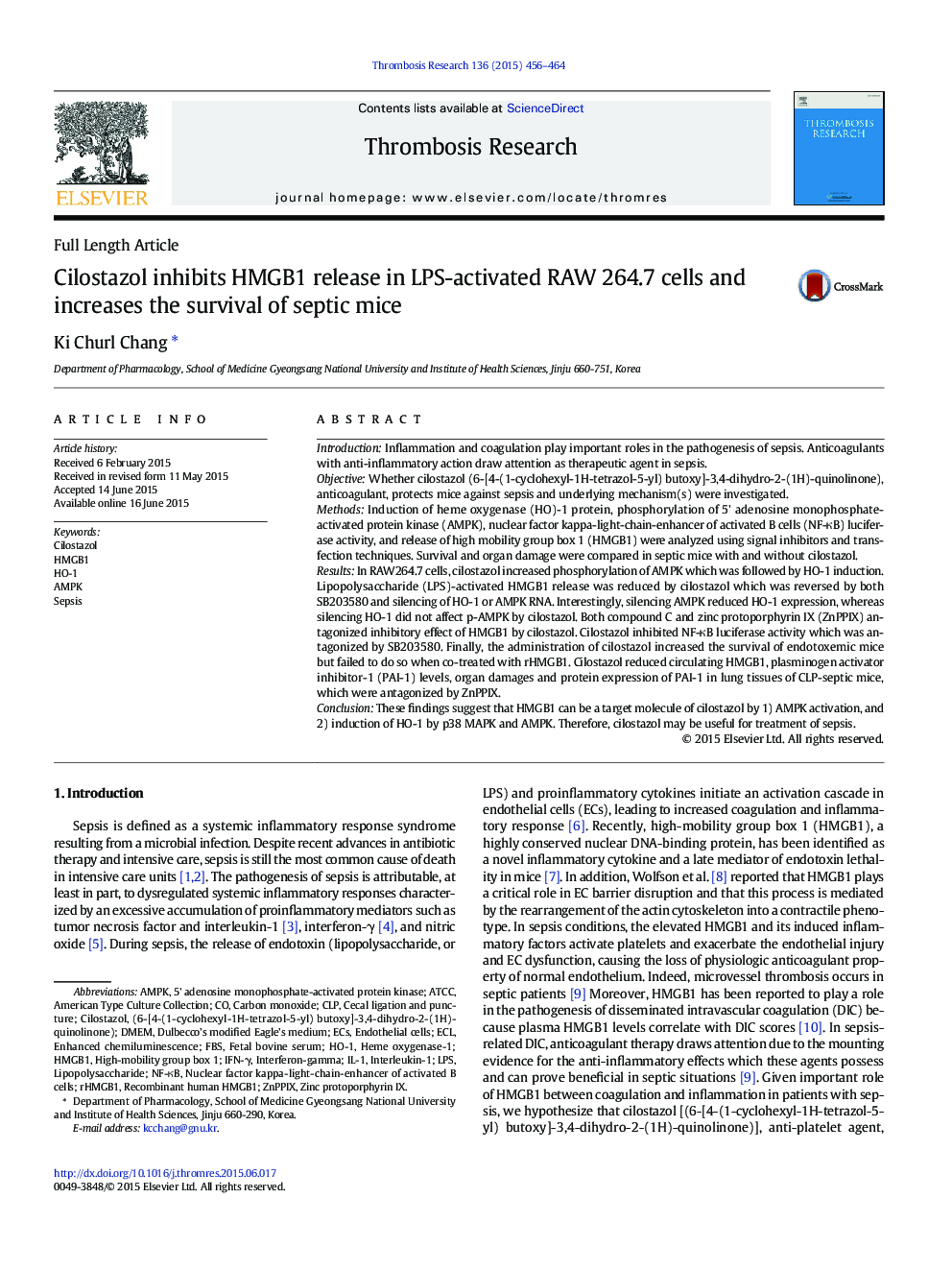| کد مقاله | کد نشریه | سال انتشار | مقاله انگلیسی | نسخه تمام متن |
|---|---|---|---|---|
| 6001347 | 1182948 | 2015 | 9 صفحه PDF | دانلود رایگان |

- Cilostazol increased p-AMPK- and p-p38 that followed by HO-1 induction.
- Cilostazol reduced HMGB1 and PAI-1 in septic mice in a ZnPPIX-sensitive manner.
- Cilostazol increased the survival of endotoxemic mice.
IntroductionInflammation and coagulation play important roles in the pathogenesis of sepsis. Anticoagulants with anti-inflammatory action draw attention as therapeutic agent in sepsis.ObjectiveWhether cilostazol (6-[4-(1-cyclohexyl-1H-tetrazol-5-yl) butoxy]-3,4-dihydro-2-(1H)-quinolinone), anticoagulant, protects mice against sepsis and underlying mechanism(s) were investigated.MethodsInduction of heme oxygenase (HO)-1 protein, phosphorylation of 5' adenosine monophosphate-activated protein kinase (AMPK), nuclear factor kappa-light-chain-enhancer of activated B cells (NF-κB) luciferase activity, and release of high mobility group box 1 (HMGB1) were analyzed using signal inhibitors and transfection techniques. Survival and organ damage were compared in septic mice with and without cilostazol.ResultsIn RAW264.7 cells, cilostazol increased phosphorylation of AMPK which was followed by HO-1 induction. Lipopolysaccharide (LPS)-activated HMGB1 release was reduced by cilostazol which was reversed by both SB203580 and silencing of HO-1 or AMPK RNA. Interestingly, silencing AMPK reduced HO-1 expression, whereas silencing HO-1 did not affect p-AMPK by cilostazol. Both compound C and zinc protoporphyrin IX (ZnPPIX) antagonized inhibitory effect of HMGB1 by cilostazol. Cilostazol inhibited NF-κB luciferase activity which was antagonized by SB203580. Finally, the administration of cilostazol increased the survival of endotoxemic mice but failed to do so when co-treated with rHMGB1. Cilostazol reduced circulating HMGB1, plasminogen activator inhibitor-1 (PAI-1) levels, organ damages and protein expression of PAI-1 in lung tissues of CLP-septic mice, which were antagonized by ZnPPIX.ConclusionThese findings suggest that HMGB1 can be a target molecule of cilostazol by 1) AMPK activation, and 2) induction of HO-1 by p38 MAPK and AMPK. Therefore, cilostazol may be useful for treatment of sepsis.
Graphical Abstract112
Journal: Thrombosis Research - Volume 136, Issue 2, August 2015, Pages 456-464